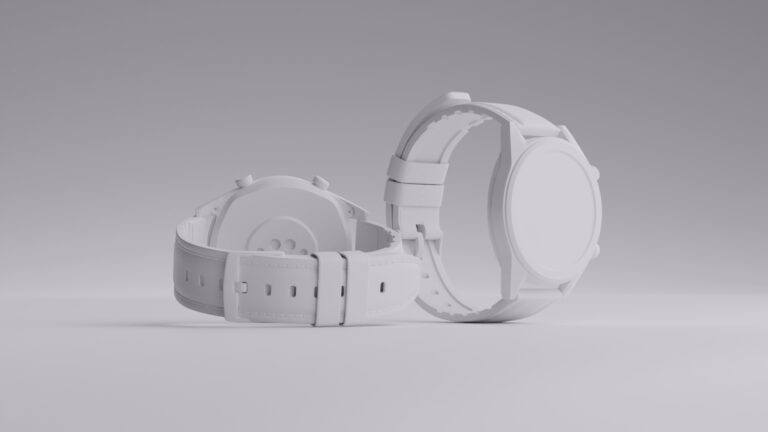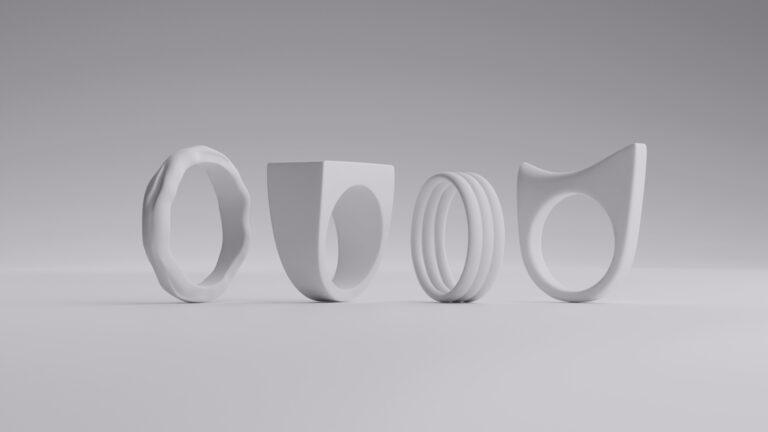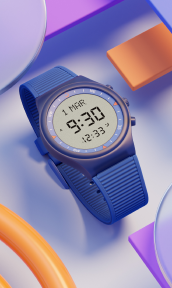Real time rendering is changing the game for digital visuals everywhere, from video games to virtual home tours. So what exactly is it? At its core, real time rendering definition boils down to this: it’s technology that creates images so fast they appear instantly as you interact with them. Unlike old-school rendering that takes forever, real time rendering meaning involves generating visuals in milliseconds, opening doors to truly interactive experiences.
The impact goes way beyond just pretty graphics. Why real time rendering matters is simple – it’s reshaping how designers work, how businesses showcase products, and how we all experience digital content. By giving instant visual feedback, real time rendering is blurring the lines between what’s physical and what’s digital, creating amazing opportunities that traditional rendering just can’t match.
How real time rendering works

The rendering pipeline explained
Real time rendering might seem like magic, but it’s really smart tech working super fast. It takes 3D data and turns it into 2D images on your screen quick enough to feel responsive and fluid.
The graphics pipeline is the backbone of this process. Think of it as an assembly line for images: 3D models and textures go in one end, and final pixels come out the other.
First, the computer figures out what you should see from your current viewpoint. Then it converts 3D shapes into 2D pixel data, before adding colors, textures, and lighting effects.
The hardware that makes it happen
Modern GPUs are the powerhouses behind real time rendering technology. These specialized chips have thousands of cores working together, handling trillions of calculations per second.
This massive power enables high frame per second rates – 60, 120, or even higher – creating smooth motion that responds instantly to what you do.
Frame per second (fps) is how we measure rendering speed. While movies run at 24 fps, real time rendering aims for at least 30 fps for decent smoothness, with 60 fps being what most professionals target. Higher framerates make everything feel more responsive and realistic.
Software frameworks and optimization tricks
Software tools like DirectX, Vulkan, and OpenGL help developers tap into GPU power without getting lost in hardware details.
Modern rendering software like Unreal Engine can handle incredibly detailed scenes with billions of polygons in real time – something that seemed impossible just a few years ago.
Real time rendering constantly balances visual quality against speed. Clever tricks automatically simplify distant objects and skip rendering things you can’t see. These optimizations focus computing power on what matters most while keeping everything running smoothly.
The technology keeps evolving, with innovations like ray tracing bringing more photorealistic rendering to real-time applications. Modern engines now mix traditional techniques with ray tracing, getting closer to pre-rendered quality while staying interactive.
Why real time rendering matters: benefits and applications

Enhanced engagement and interactivity
Real time rendering has transformed from tech novelty to essential tool across industries. Its ability to create responsive visual experiences offers advantages of real time rendering that static images simply can’t match.
The biggest benefit? Engagement. When you can interact with and manipulate 3D environments instantly, you’re naturally more engaged. Research shows interactive rendering drives significantly higher engagement than static images. This creates deeper connections between users and content, whether they’re playing a game or checking out a virtual product demo.
The immediate feedback loop of instant rendering supercharges design workflows. Architects using tools like Twinmotion can make changes and see results immediately, eliminating the waiting game of traditional rendering. This cuts design cycles from days to minutes, allowing more exploration and refinement.
Transforming business and commerce
In online shopping, real time rendering is revolutionizing how products are shown. Furniture retailers now let you see how that sofa would look in your actual living room before buying. This application has been shown to reduce returns significantly – a major win for businesses.
Training simulations thrive on real time rendering. Medical students practice procedures in virtual environments, while pilots train in flight simulators that respond instantly. Virtual training using real time rendering cuts costs dramatically while improving how well people learn and retain skills.
Revolutionizing design and entertainment
Architectural visualization has been completely transformed. Design firms use real time rendering to walk clients through building designs before construction even starts. This helps catch design issues early, improves communication, and cuts down on expensive changes later. It lets people experience spaces instead of just looking at them.
The entertainment industry runs on real time rendering, with video games being the most obvious example. Games like “The Last of Us Part II” showcase nearly photorealistic rendering in environments that respond to player actions. Beyond gaming, shows like “The Mandalorian” use real time rendering to create digital backdrops that actors can see and respond to during filming.
Virtual and augmented reality absolutely depend on real time rendering. These immersive technologies need rendering from your perspective at 90+ fps to feel convincing and prevent motion sickness. As VR/AR grows in popularity, efficient real time rendering becomes even more crucial.
Real time vs. pre-rendered content

Speed vs. quality: the fundamental tradeoff
Knowing when to use real time rendering versus pre-rendering helps you make smarter decisions about visualization. Each approach has its sweet spots.
Real time rendering shines when you need immediate visual feedback. Measured in milliseconds rather than hours, it lets users interact naturally with 3D environments. Video games are the perfect example – players expect their actions to have instant visual consequences.
Pre-rendering allows for much higher detail and complexity. Because rendering happens offline without time pressure, each frame can use complex lighting calculations and incredibly detailed models. That’s why animated films look so stunning – a single frame might take hours to render, but the visual quality is worth it for non-interactive content.
Hardware considerations and visual quality
The hardware needs between these approaches are worlds apart. Real time rendering demands powerful GPUs that can process complex scenes instantly, with performance varying based on your hardware. Pre-rendering can use render farms with hundreds of computers working together for days or weeks.
Visual quality traditionally favored pre-rendering, but that gap is shrinking fast. Modern real time rendering now includes techniques like ray tracing and physically based materials that were once only possible offline. Games like “Hellblade 2” showcase visual quality approaching pre-rendered content while staying interactive.
Workflow flexibility and cost implications
Workflow flexibility is a huge advantage of real time rendering. Artists can make changes and see results immediately, making it easy to experiment. Many architectural firms report that switching to real time rendering workflows dramatically cuts visualization time, allowing them to explore more options and respond better to client feedback.
Cost considerations often favor real time rendering for ongoing projects. While initial setup might be more complex, the ability to make changes without lengthy re-rendering makes real time rendering more economical for iterative work. Pre-rendering can be quite expensive per minute of final animation, while real-time solutions can be updated endlessly once built.
Many projects now use hybrid approaches combining both techniques. Architectural firms might use real time rendering for client meetings and design work, then produce final marketing materials with pre-rendered techniques for maximum visual impact.
Real time rendering in action: practical applications

Transforming architecture and design
Real time rendering is changing how work gets done across industries. These real-world examples show the concrete benefits of real time rendering.
In architecture, real time rendering has revolutionized how designs are shared and experienced. Firms use tools like Enscape for virtual walkthroughs with clients, allowing immediate feedback. Designers can change materials, lighting, and structural elements during meetings and see results instantly. This helps clients understand spaces better and make more informed decisions.
Product design loves real time rendering too. Car companies use it to evaluate new vehicle designs without building physical prototypes for every iteration. Their virtual review process lets designers and engineers check everything from exterior styling to interior comfort in collaborative virtual sessions. This cuts prototype costs while speeding up the design process.
Revolutionizing real estate and entertainment
The real estate market has embraced real time rendering for better property marketing. Companies create virtual twins of properties that buyers can explore before scheduling in-person viewings. Listings with interactive 3D tours get more views and sell faster than those with just static images. This helps buyers narrow their search efficiently while giving sellers a marketing edge.
Entertainment production increasingly relies on real time rendering. The groundbreaking techniques used in “The Mandalorian” use Unreal Engine to create interactive backgrounds displayed on massive LED walls. Instead of green screens, actors perform within reactive virtual environments. This cuts post-production costs while improving performance through better context.
Training, gaming, and commerce
Training simulations leverage real time rendering to create safe learning environments for risky activities. Airline pilots train in flight simulators that respond instantly to controls while simulating various weather conditions and emergencies. These simulators create thousands of training scenarios without fuel costs or safety risks.
Video games showcase real time rendering at its finest. Modern games create increasingly photorealistic rendering in environments that respond dynamically to player actions. Unreal Engine 5 handles billions of polygons and real-time global illumination, approaching visual quality once possible only in pre-rendered content.
E-commerce platforms use real time rendering to enhance online shopping. Furniture retailers’ “View in Room” features use augmented reality to show how products would look in your actual spaces. This helps customers make confident buying decisions while reducing return costs.
Urban planning departments use interactive rendering to better communicate development proposals. Cities create digital twins to visualize how new developments will affect sightlines, traffic, and neighborhood character. These tools enable better public feedback and smarter decisions about urban growth.
Future horizons for real time rendering

Next-gen tech: ray tracing and AI
Real time rendering technology keeps evolving at breakneck speed, with innovations constantly pushing boundaries. The future looks even more exciting as hardware advances and algorithms improve.
Ray tracing is one of the biggest recent leaps in real time rendering. This technique simulates actual light behavior by tracking rays as they bounce off surfaces. While traditionally too demanding for real-time use, dedicated hardware in modern GPUs now makes it viable. Games like “Cyberpunk 2077” show how ray-traced reflections, shadows, and lighting create dramatically more realistic scenes compared to traditional methods.
Machine learning is revolutionizing rendering technology through AI-powered upscaling. These smart techniques render frames at lower resolutions, then intelligently enhance them to higher resolutions. This approach can boost performance significantly while maintaining visual quality nearly identical to native high-resolution rendering.
Cloud rendering and virtual production
Cloud-based rendering software is democratizing access to high-quality graphics. Services like NVIDIA GeForce Now render complex 3D environments on remote servers, then stream results to your devices. This enables photorealistic rendering on modest hardware, from phones to budget laptops. As networks improve with 5G and beyond, cloud rendering will become more widespread.
Virtual production techniques represent a fusion of real time rendering with traditional filmmaking. LED walls displaying interactive environments rendered in real time are replacing green screens, allowing filmmakers to capture final imagery directly rather than compositing elements later. More studios are building virtual production stages to tap into these creative and economic benefits.
Pushing the sensory boundaries
Volumetric capture represents the next frontier for creating ultrarealistic digital humans and environments. These techniques capture complete light information from multiple angles, enabling more realistic rendering from any viewpoint. Companies are developing ways to capture, compress, and render volumetric video in real time, which could transform telepresence and entertainment.
Haptic feedback paired with real time rendering creates more immersive experiences. As virtual environments become more visually convincing, technologies that add touch sensations will create a stronger presence. Various devices now pair with visual rendering to add physical feedback matching virtual interactions.
Photogrammetry and 3D scanning are becoming standard in real time rendering workflows. These approaches capture real-world objects with exceptional detail, which can then be used in real-time applications. The resulting assets have a level of authenticity that would be extremely difficult to create by hand.
The CGI advantage in real time rendering
As real time rendering technology advances, CGI studios are uniquely positioned to deliver exceptional results. These specialized firms combine technical knowledge, artistic talent, and cutting-edge hardware to create stunning real-time experiences that would be tough for non-specialists to achieve.
CGI pros understand how to optimize 3D assets for real-time performance, balancing visual quality with technical constraints. They use advanced techniques to ensure smooth performance even with complex scenes. Their experience with lighting, materials, and environment design helps create more convincing virtual spaces.
The team approach at CGI studios brings together specialists from different areas – modeling, animation, lighting, and programming – enabling more sophisticated applications. This multi-skilled approach is particularly valuable for complex projects needing both technical skill and artistic vision.
For businesses looking to adopt real time rendering, partnering with CGI specialists can speed up implementation and improve results. Whether you’re developing product configurators, virtual property tours, or training simulations, CGI studios have the specialized knowledge to help you fully leverage rendering technology and stay ahead of competitors.
Wrapping up
Real time rendering has grown from tech curiosity to essential tool that’s transforming how we interact with digital content. By providing instant feedback and interactive experiences, it creates possibilities that traditional rendering just can’t match. The tech keeps advancing, with ray tracing and AI pushing boundaries further every year.
The applications span countless industries, from architecture to gaming to e-commerce. In each case, real time rendering delivers clear benefits: faster workflows, better communication, and more engaging experiences.
The gap between real time rendering and pre-rendered content keeps shrinking. For businesses looking to implement this technology, partnering with CGI specialists is your best bet for optimal results.
As real time rendering becomes more integrated into our daily digital lives, from AR shopping to virtual workspaces, it will continue transforming how we interact with information and each other, bridging physical and digital worlds in ways that enhance what we can do and create.
FAQ
What is the difference between real time rendering and pre-rendering?
Real time rendering generates images instantly as you interact with a 3D environment, typically at 30-120 frames per second. Pre-rendering takes much longer (minutes to hours per frame) but can produce higher-quality images with more complex lighting and effects. Real time rendering prioritizes speed and interactivity, while pre-rendering prioritizes visual quality and detail. However, advances in rendering technology are continuously narrowing this quality gap.
What hardware is needed for real time rendering?
Real time rendering typically requires a dedicated graphics processing unit (GPU) with sufficient memory for your scene’s complexity. For professional applications, GPUs like NVIDIA’s RTX series or AMD’s Radeon Pro provide the necessary performance. Requirements depend on your rendering software, scene complexity, resolution, and desired frame per second rate. More complex scenes with features like ray tracing need more powerful hardware. RAM and CPU speed also matter, especially for physics calculations.
How many frames per second is considered “real time”?
Generally, anything above 24 frames per second (fps) can create the illusion of motion, but true real time rendering usually aims for at least 30 fps for acceptable smoothness. Most professional applications target 60 fps for smooth interaction, while competitive gaming often aims for 120-240 fps. Virtual reality applications typically require 90 fps or higher to prevent motion sickness. Higher framerates make the experience feel more responsive to users.
Which industries benefit most from real time rendering?
Multiple industries have embraced real time rendering: Architecture and real estate use it for virtual walkthroughs of unbuilt spaces; product design for rapid visualization of concepts; video game development for interactive rendering environments; film production for virtual production; automotive for virtual prototyping; e-commerce for interactive product visualization; training and simulation for immersive learning experiences; and urban planning for interactive city modeling. Any field that benefits from interactive 3D visualization can find applications for real time rendering.
What software is used for real time rendering?
Popular rendering software for real-time applications includes game engines like Unreal Engine and Unity, which now serve architecture, film, and design too. Architectural visualization has specialized tools like Enscape, Twinmotion, and Lumion that integrate with modeling software. D5 Render and Shapespark focus on web-based interactive rendering. Professional 3D applications like Blender, 3ds Max, and Cinema 4D also include real-time viewports. The choice depends on your specific needs, existing workflow, and desired output quality.






























